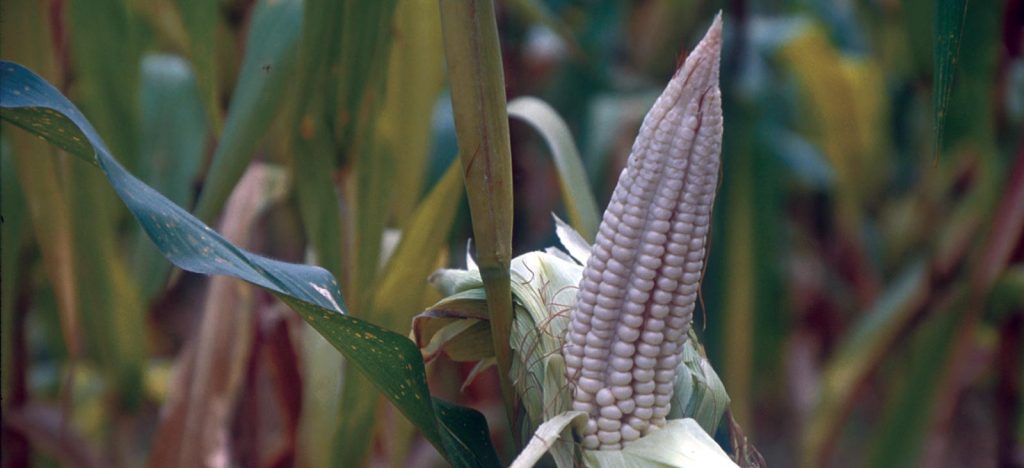New pest identified in West and Central Africa!
- From
-
Published on
22.05.18
- Impact Area

A second armyworm from the Americas introduced into tropical Africa
A new pest—southern armyworm, Spodoptera eridania (Stoll)—has been discovered in West and Central Africa!
This introduced second armyworm species from the Americas was first found in cassava fields in south-eastern Nigeria in December 2016, reported Dr Georg Goergen, Entomologist/Biocontrol Specialist and Head of IITA’s Biodiversity Center in Bénin. Its presence was confirmed by DNA barcode analysis at IITA headquarters in Ibadan.
The recent introduction of the fall armyworm (FAW) into the African continent and its growing threat to agriculture and food security have caused great concern in many of the 44 countries of tropical Africa invaded by this pest. Originating from the tropical regions of the Americas the FAW adult has a remarkable capacity for long distance migration and high female fertility. Its crop-destroying caterpillars can cause serious damage to maize but also to other important crops such as sorghum, rice, and vegetables.
These attributes have made the control of FAW a challenging task. The development of management options adapted to Africa has mobilized international experts and the national capacities of affected countries and raised general attention to caterpillar attacks on various crops.
Farmers had first observed an outbreak of caterpillars that caused severe defoliation on cassava in a 450-hectare field near Ubiaja in southeastern Nigeria in late 2016. Alcohol-preserved samples of the larvae were sent for diagnosis to the Biodiversity Center at the IITA station in Bénin, which did not match the morphological characteristics of FAW caterpillars. The species, however, appeared to have related origins and resembled closely the African cotton leafworm (S. littoralis [Boisduval]). In the absence of adult moths, it was concluded that the latter species, widespread in tropical Africa and known to feed on various kinds of food, must have attacked some sweet varieties of cassava that are less toxic to potential insect pests.
Related news
-

KOICA, UPLB, IRRI Partnership Establishes a Genomic Powerhouse to Future-Proof Agriculture
International Rice Research Institute (IRRI)01.07.25-
Food security
LOS BAÑOS, Philippines (26 June 2026) — KOICA, UPLB, and IRRI came together to showcase…
Read more -
-

A Quest for Market- and Farmer-Aligned Rice Varieties in Mozambique
International Rice Research Institute (IRRI)01.07.25-
Food security
Quelimane, Mozambique (11 June 2025) — Mozambique is taking steps toward a more market-responsive …
Read more -
-

Sudan’s prolonged conflict could slash GDP by over 40% and push millions deeper into poverty, new IFPRI study warns
International Food Policy Research Institute (IFPRI)30.06.25-
Food security
Press Release - June 30, 2025 A new study by researchers at the International Food Policy Research…
Read more -
